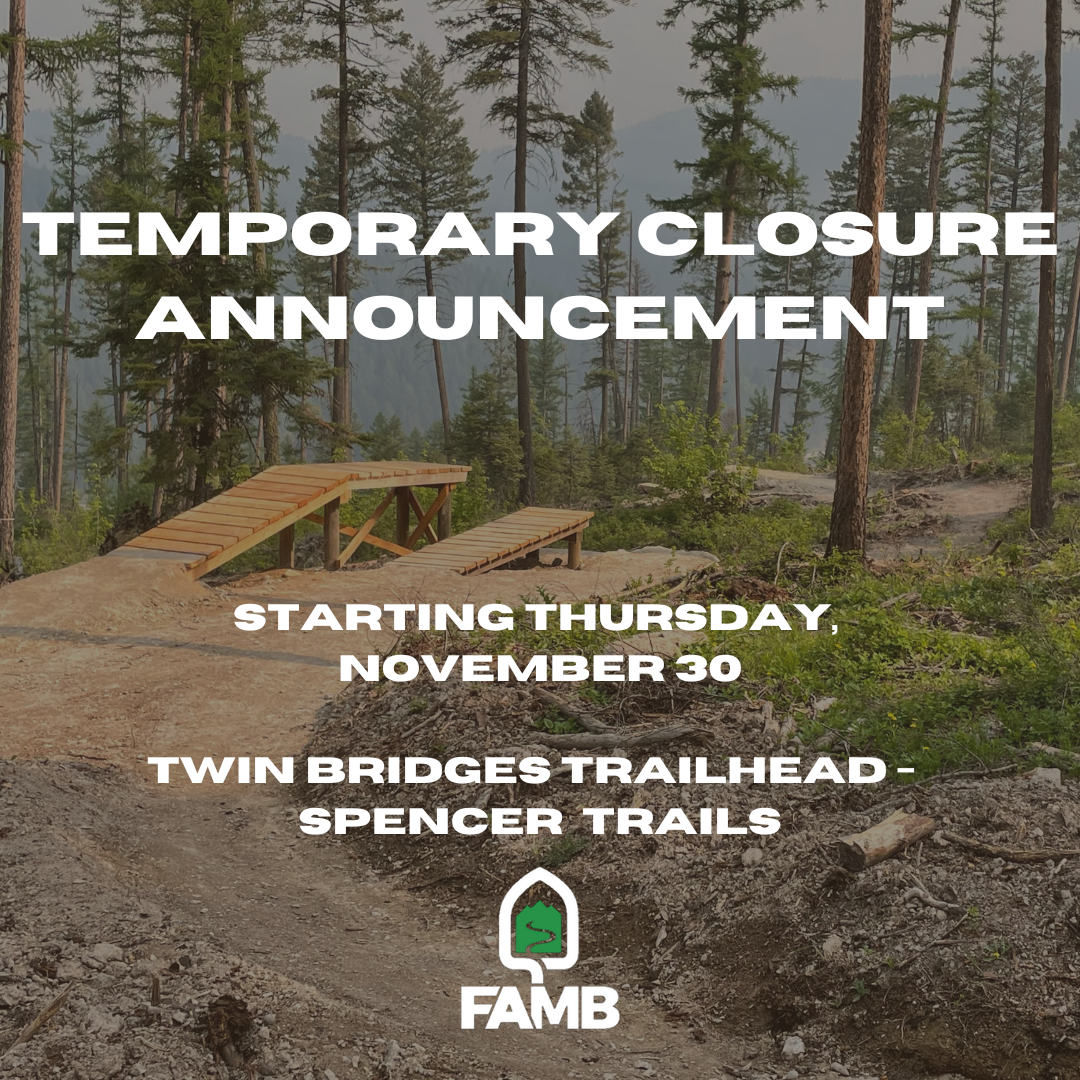|
I have a created a new Facebook group I hope you will check out, note this is not a FAMB specific page so invite anyone that would be interested to join!
This is a Flathead Valley community forum for posting trail conditions, finding a riding partner, bike related events, discussing mountain bikes, parts and gear, as well as looking for advice and asking questions! If you are an avid mountain biker in the Flathead, have just moved here, or are new to mountain bikes and are looking for tips you are in the right place. https://www.facebook.com/groups/925664545902007/
0 Comments
Summary
● #61: Hall Lake ○ Days on trail: 4 ■ Brushing Details ● #61: Hall Lake: 1.8 of 4.7 miles of trail maintained. ○ Total brushing: 1.8 miles. ○ Projects to address: ■ Clearing of drains. Recent heavy rains clogged 90% of them. ■ Lots of water/mud on trail above river crossing. Culverts have been installed in the past, but maintenance needs to be done. ■ Would like to talk about installing a bridge over the river crossing about a mile from TH. Currently no safe, dry way to cross. Summary
● #287: Pine Grass ○ Days on trail: 1 ■ Tread work ● #26: Whitefish Divide ○ Days on trail: 3 ■ Brushing Details ● #287: Pine Grass: 0.1 of 4.3 miles of trail maintained. ○ Total tread work this week: ~170 ft. ● #26: Whitefish Divide: 2.5 (total) of 16.8 miles of trail maintained. ○ Brushed head-high plants back 4 ft on each side. Very slow moving. ○ Found the end of the brush, trail reports lead us to believe we got the worst of it. Summary
● #26: Whitefish Divide/Ralph Thayer Memorial Trail ○ Days on trail: 3 ■ Brushing Details ● #26: Whitefish Divide: 1.7 of 16.8 miles of trail maintained. ○ Brushed 1.7 miles over 3 days. Brush is heavy where we stopped, very slow moving. Summary
● #800: Bill Cr ○ Days on trail: 1 ■ Treadwork ● #287: Pine Grass ○ Days on trail: 2 ■ Treadwork Details ● #800: Bill Cr: 0.2 of 4.9 miles of trail maintained. ○ Worked with FS and YCC Crews. ○ Started near the lower bridge and worked our way up. ○ Total tread work by FAMB: 300 ft. ● #287: Pine Grass: 0.4 of 4.3 miles of trail maintained. ○ Worked with FS Crews. ○ Started from the top of the ridge, installed drains and widened tread at new drain locations. ○ We will return in the next couple weeks to continue work, we have a couple other projects in progress to address. ○ Total tread work by FAMB: ~500 ft. Summary
● #309: Fawn Cr ○ Days on trail: 4 ■ Treadwork Details ● #309: Fawn: 0.2 of 5.5 miles of trail maintained. ○ Widened and flattened tread for a total of 700 ft. ○ Cut back slopes as high as needed to address sluffing. ○ Concentrated work on the narrowest, most out sloped, most hazardous sections. Tally District
7/14/2023 Summary ● #800: Bill Cr ○ Days on trail: 3 ■ Treadwork ■ Brushing Details ● #800: Bill Cr: 0.8 of 4.9 miles of trail maintained. ○ Worked alongside FS Crew and YCC to widen and flatten the worst sections of cupping. Started at the bottom, working up. ○ Total treadwork by FAMB: 700 ft. ○ Brushed trail from lower road TH to bridge: 0.1 miles of brushing. ○ Decommissioned social trail shortcut to the road. Hungry Horse District 7/14/2023 Summary ● #44: Abbot Cr ○ Days on trail: 1 ■ Clearing Details ● #44: Abbot Cr: 3.4 of 4.7 miles of trail maintained. ○ Cleared 13 trees, and 5 cutbacks. Summary
● #287: Pine Grass ○ Days on trail: 4 ■ Tread work Details ● #287: Pine Grass: 0.4 of 4.3 miles of trail maintained. ○ Worked with FS Crews. ○ Started from the top climbing turn, installed drains and widened tread. ○ Total tread work by FAMB: ~650 ft. |
About UsFlathead Area Mountain Bikers, a 501(c)(3) nonprofit, is working to promote mountain biking and improve trail access in the Flathead Valley. Archives
June 2024
Categories |



 RSS Feed
RSS Feed
